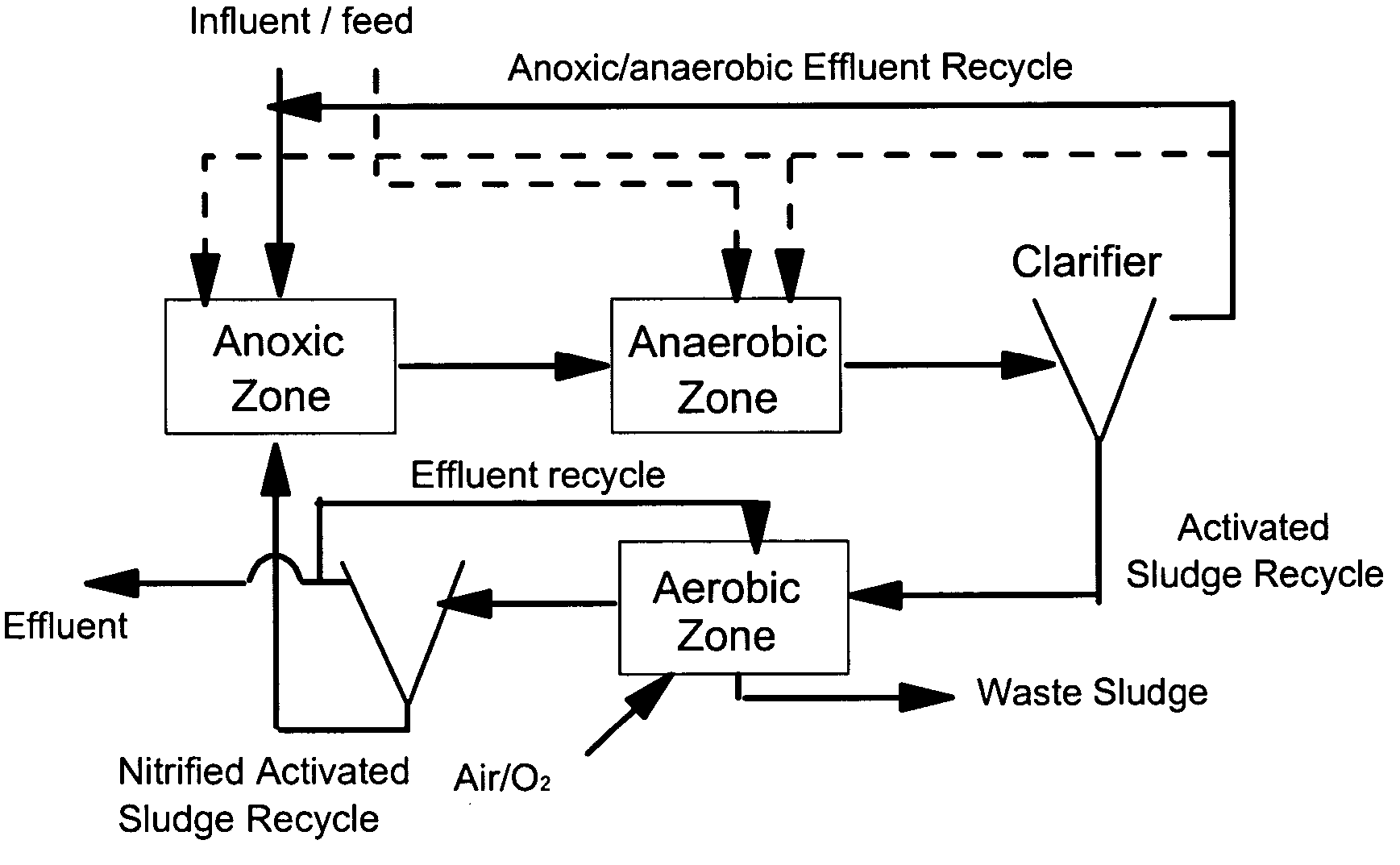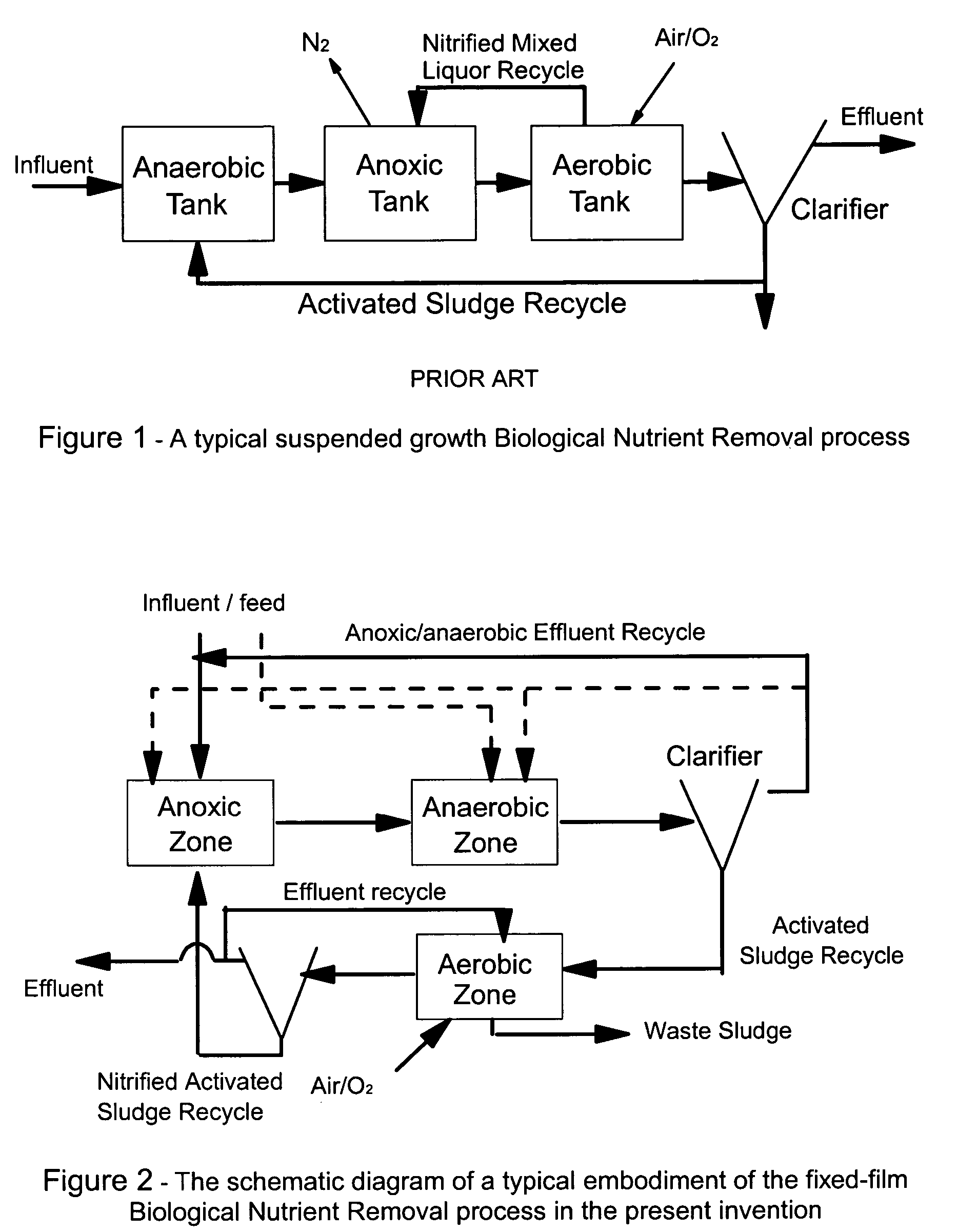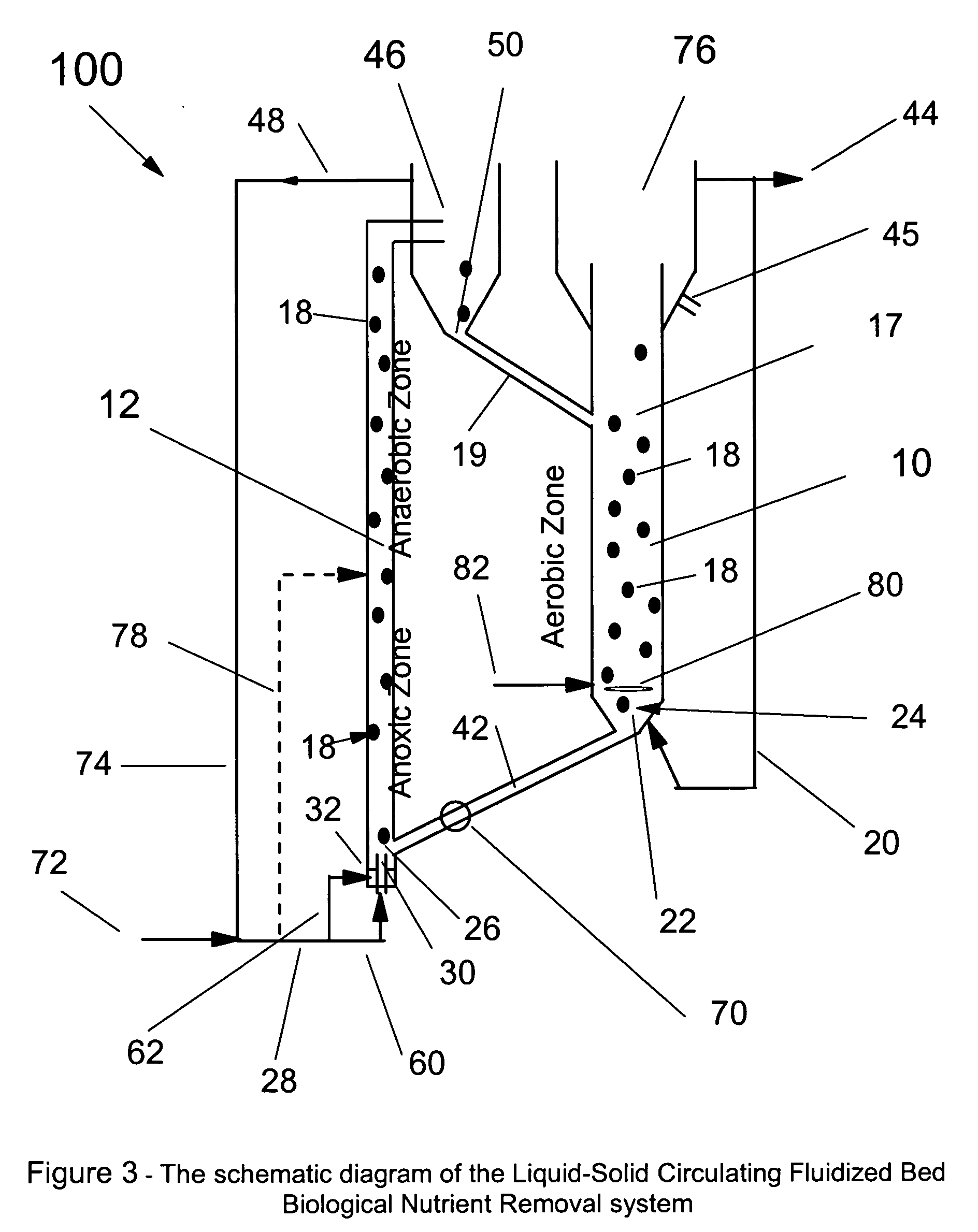Liquid-solid circulating fluidized bed waste water treatment system for simultaneous carbon, nitrogen and phosphorus removal
a waste water treatment system and liquid-solid circulating technology, applied in water/sewage multi-stage treatment, filtration separation, separation processes, etc., can solve problems such as anaerobic conditions
- Summary
- Abstract
- Description
- Claims
- Application Information
AI Technical Summary
Benefits of technology
Problems solved by technology
Method used
Image
Examples
Embodiment Construction
[0039] A flow diagram illustrating the fixed-film BNR process used in the LSCFB 100 (FIG. 3) of the present invention is illustrated in FIG. 2. In connection with FIG. 3, the aerobic process takes place in the downer bed 10 and the anoxic process takes place in the lower part of the riser bed 12 and the anaerobic process takes place in the upper part of the riser bed 12. An alternative is to have the anoxic process in the upper part of the riser and the anaerobic in the lower part of the riser. In this case, however, most of the nitrified effluent from the aerobic zone needs to be fed half way in the riser to the bottom of the anoxic zone. Raw wastewater 72 (primary influent or primary effluent) is first mixed with the anoxic / anaerobic effluent recycle stream 74 from the liquid-solid separator 46 at the top of the riser and then fed into the bottom of the riser bed 12 where the activated sludge loaded on the recirculating solid particles along with some previously nitrified wastewat...
PUM
| Property | Measurement | Unit |
|---|---|---|
| Electrical conductance | aaaaa | aaaaa |
| Gravity | aaaaa | aaaaa |
| Mass transfer coefficient | aaaaa | aaaaa |
Abstract
Description
Claims
Application Information
 Login to View More
Login to View More - R&D
- Intellectual Property
- Life Sciences
- Materials
- Tech Scout
- Unparalleled Data Quality
- Higher Quality Content
- 60% Fewer Hallucinations
Browse by: Latest US Patents, China's latest patents, Technical Efficacy Thesaurus, Application Domain, Technology Topic, Popular Technical Reports.
© 2025 PatSnap. All rights reserved.Legal|Privacy policy|Modern Slavery Act Transparency Statement|Sitemap|About US| Contact US: help@patsnap.com



